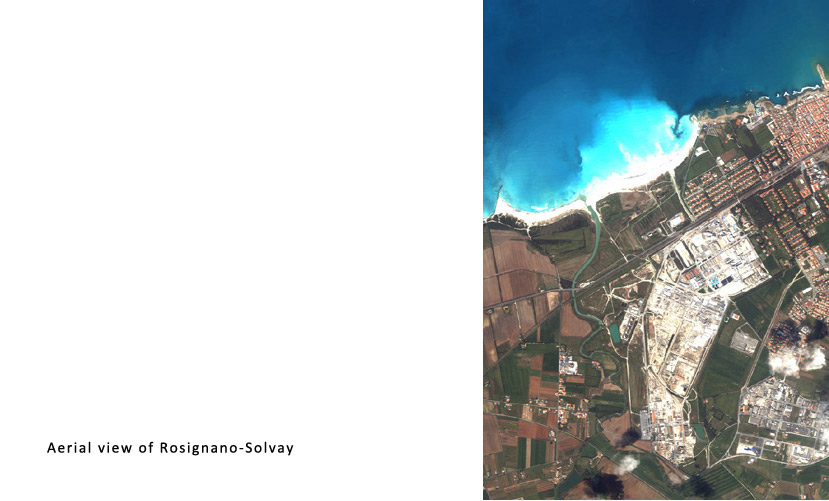
Photographs on Dibond: 125 x 82 cm ea.
Spiagge Bianche is the name given to the almost 4 kilometers of white sandy coast in Tuscany, resulting from over a century of calcium carbonate residue accumulation discarded by group Solvay’s chemical plant, situated at 1 kilometer off the coast. Ernest Solvay, an important Belgian chemist and businessman spanning between the XIX and XX century, established an enterprise that would determine the area’s landscape: a garden city that distributes its workers based on the hierarchy that they occupy in the factory. Therefore, the town became an accomplice of the ideal of order and rationality typical of European capitalism that imposed the central perspective, as already observed by Pierre Francastel.
In artistic terms, the central perspective seeks to reach the mimesis in representation, reducing the three-dimensional perspective to a bi-dimensional, which respects the appearance of depth. Following this logic of plausible artificiality, Ainhoa Akutain introduces the rectangle form in positive and negative in the landscape: an emptiness (Zuloa) and a pier (Kaia) that when photographed melt with an impossible, a rationalist geometry.
Otto Stelzer stated during his time that the diffusion of photography would mean the triumph of the perspective dictated by the central perspective. The artist’s intervention destabilizes the representation onto which this mode of perception is held, revealing the mirage where these white beaches rest: just as beautiful as perverse; underneath their appearance, they hide a contaminated surrounding and a territory formed by the mark of power. This dialectical relation is also revealed by the installation’s sculptural pieces, reflecting the different layers that compose this landscape.
Julia Morandeira-Arrizabalaga